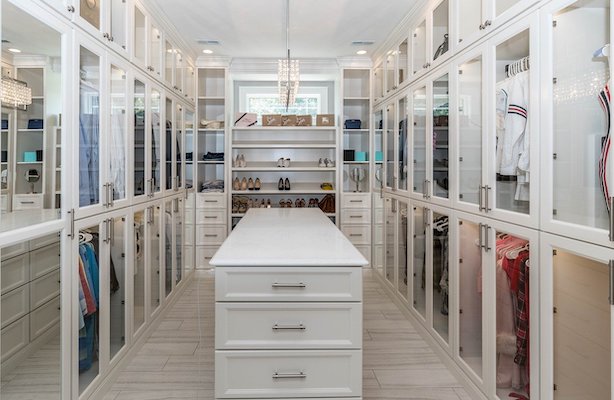
Congratulations! You have decluttered your wardrobe and are left with comfortable clothes that make you feel your best. Now it is time to organize your closet. A well-designed closet will store clothing properly, extend the life of your clothes, and allow you to find what you need when you need it. There are many types of closet systems, from custom cabinetry to DIY products from the local hardware store. Regardless of which model you choose, read through our clothes, closet design tips to make the most of your space.
Who Uses the Closet
Different people are of different sizes. If two people share the closet, you will have to take into account the variation in clothing sizes. Taller people will need more vertical space to hang shirts and trousers. Children grow – and sometimes very quickly. Think about adjustability when designing their closets. They may need to store some longer and larger clothes that they haven’t grown into yet.
The way the user likes to store their clothing will influence the design. Some people meticulously fold their clothes. Others toss them into a drawer or basket. Do they fold jeans or hang them? They might prefer to hang trousers by the cuff or fold them over the hanger. Remember: It is a lot easier to design a closet to accommodate a person’s habits than to force a person to change habits to accommodate the design.
Know Your Clothes
Make a list of what clothing will go in the closet (e.g. 12 dress shirts, three suits, two blazers, four pairs of trousers, etc.). Use this size guide to help you determine how much space your clothes take up. Then, you can plan how much vertical hanging space and how much drawer space you need.
Know Your Closet
Closets can be anywhere from 14 inches to 24 inches deep. Most clothing hangers are 16″ wide, and suit jackets hang at least one inch beyond the hanger so your clothing may protrude in shallow closets.
Drawers don’t always work in narrow walk-in closets as there is not enough space to move around when the drawer is open. If you have a walk-in closet, don’t install drawers behind the door, or you will always be closing the door to access your clothes. For closets with sliding doors, make sure you place the drawers close to the middle of the opening, so they extend fully.
If your closet has corners, don’t let that space go to waste. Install corner shelving for storing bags or shoes or mount a curved rail for hanging clothes.
More Closet Design Tips
Go long first then, double the rest. Make space for longer hanging clothes first, including long dresses, trousers hung by the cuffs, or shirts hung with a space-maker. All remaining hanging spaces should have an upper and lower rod to maximize closet space. Consider using an adjustable rod in children’s closets.
Use full-sized drawers. Sometimes drawers will have a high front but short sides resulting in clothes falling over and getting stuck when you open and close the drawer. Instead, look for drawers with sides as high as the front for maximum storage space.
Think about accessibility. Keep the most frequently used items in the centre of the closet within easy reach. No one wants to climb a ladder to access their everyday jeans. Put off-season and seldom used clothing in corners, on higher shelves and closer to the floor.
Accessorize. Certain closet accessories are essential for some people; other accessories might be unnecessary. Here are a few things you can consider in your closet design.
- A shepherd’s hook helps reach hangers on an upper rod. Or you could install a drop-down closet rod.
- Placing a laundry basket in the closet keeps clothes from spreading all over the room.
- Keep a small trash bin handy for clothing tags, dry cleaning covers, and tissues and lint from pockets.
- Designate an area for pyjamas, bathrobes, and in-between clothes by installing hooks or a valet.
Create and Explore. There are several dynamic online tools to help you design and customize your closet. Both Rubbermaid and Closetmaid are easy to use, and their do-it-yourself systems are available at local hardware stores. The IKEA Pax Planner is used for the IKEA wardrobe system, but you will get some good ideas for designing reach-in closets.
If the thought of managing your custom closet is overwhelming, the Out of Chaos team would be happy to help. Contact Linda Chu for closet design tips at the Out of Chaos website.
Image by Mike Gattorna from Pixabay
